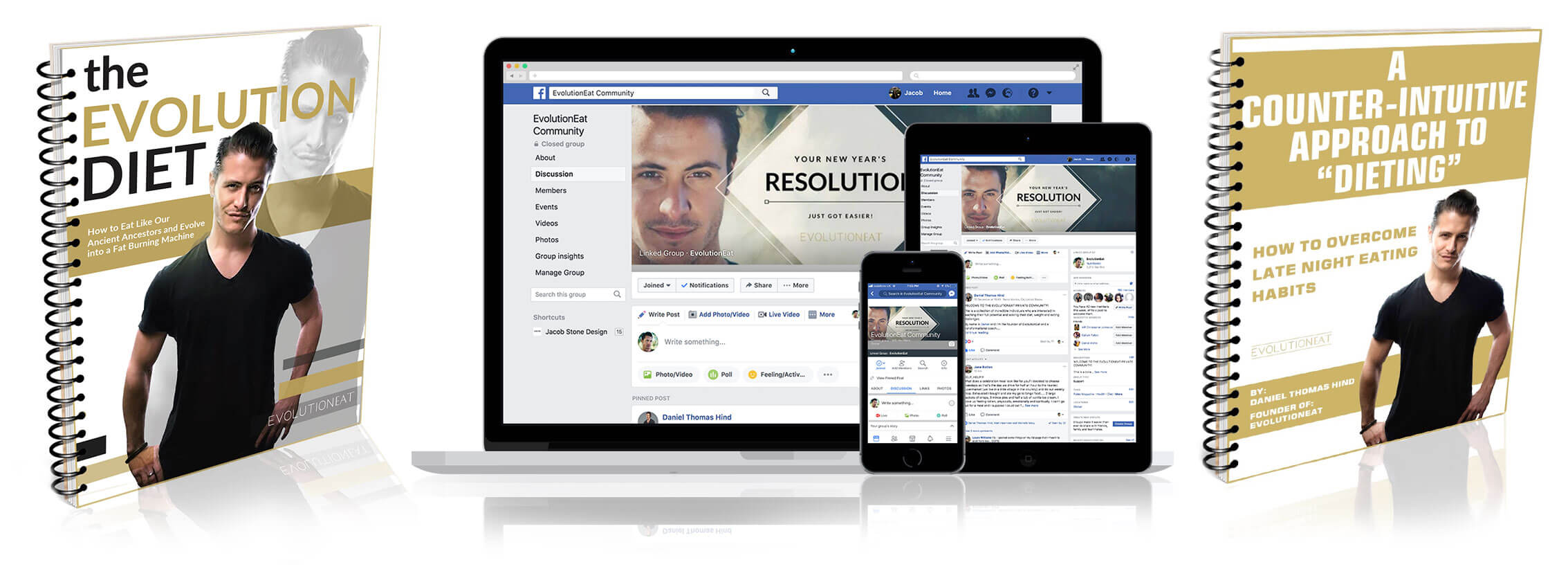For some, it kicks in immediately. For others, after a few weeks. For a particular few, it never happens. When you cut your overall carbohydrate intake, chances are you’ll experience the “low carb flu.” The more drastic the cut, the harder it hits. It feels like you’re having the flu, only you’re not sick–you’re just cutting carbs.
Low-carb flu can include any one or combination of the following:
- You feel fuzzy and foggy, like your brain just isn’t working right.
- You wake up or can’t go to sleep because of persistent headaches.
- You’re exhausted, cranky, and irritable for seemingly no reason.
- You feel empty, lost, depressed even.
- Going to the gym feels like an insurmountable challenge. If you do make it, your performance is hampered.
- You feel ravenously hungry, even after consciously eating more than enough of the good stuff.
- You experiences non-stop cravings for anything with carbs – fruit, soda, bagels, pasta, pizza, sandwiches, mashed potatoes, candy, chocolate.
The experience of any of the above can range from mild to strong to unbearable. At some point, you know the magic is going to kick in and you’ll start feeling like a human again, but the transition period can be rough. You might begin to doubt if you can endure it from a pure “is it worth it?” perspective. You worry that your responsibilities will fall to the wayside, you’ve got a job and a million things going on. This was supposed to be a lifestyle evolution with the intention of elevating your experience life, and this lifestyle is already demanding too much.
These can be destructive thoughts, and there’s no reason to endure any of them beyond the point of ‘mildly uncomfortable.’ Change is hard, and we know that, but it shouldn’t be painful.
So what gives? Isn’t a low-carb diet supposed to make you feel better, not worse?
Yes it is – and yes it will. But for some people, there’s an initial period of adaptation while your body switches gears.
Here’s what’s going on underneath the hood: The body either burns fat or carbohydrates for energy. Metabolic flexibility is the ability to switch back and forth between carbs and fat for energy without a problem. This is how healthy humans are set up. If you eat a sweet potato with butter, get up, and go along with your day, you’re metabolically flexible. First you burn through the carbohydrates in the sweet potato; then you burn through the fat in the butter. That’s the hierarchy of energy metabolism: carbs first, fat second. Finally, several hours later, you notice your hunger gradually increasing and get up to find something else to eat.
Metabolically impaired: If you eat the sweet potato with butter, and then an hour later you think you need some crackers because your blood sugar is tanking, then you have impaired metabolic flexibility. Your body burned through all the carbs, but the switch to burning fat is difficult for a whole host of reasons that are beyond our scope right now – so it stores the fat and demands more carbs for energy. If you eat the crackers and keep providing those carbs, the cycle keeps repeating (while you slowly gain weight from all that stored fat).
This impaired metabolic flexibility is clearly a problem – it’s a hallmark of diabetes, for example, and related metabolic disorders, and it’s a symptom of the Standard American Diet. Even if you’re not “fat,” if you experience life as described per the above, then you’re metabolically impaired – and you’re setting yourself up for a life of illness and run-down.
Knowing all of this BEFORE it happens is empowering. Now we can prepare for it and not feel side-swiped. It’s normal, which means you don’t have to freak out.
How to Mitigate the Effects of the Low Carb Flu:
1. Titrate down. For people who are metabolically impaired, a low-carb version of an evolutionary diet can be very therapeutic, but you don’t have to go from 0 to 100 overnight. A better strategy is to titrate down gradually. First, replace grain carbs with natural-source carbs as much as you can, but don’t be afraid to eat a sweet potato, 1-2 servings of your favorite fruit, and/or beans to ease the process. This will help your body adjust more slowly into becoming a fat burner, and it’ll reduce the brutal week of low carb flu.
Action Step: If you’re in serious pain, or feeling utterly empty, depressed even, then dear God please do something about it! Add a sweet potato to your dinner 3 nights per week and a piece of fruit (like berries or an apple) to your lunch/snack. Keep breakfast as low-carb as possible. If you haven’t been on the journey for 4 weeks yet, then withhold from a full-blown cheat meal and see how you feel after making the above fixes.
2. Experiment. Don’t reduce carbs unnecessarily. There’s no point to being low-carb for the sake of being low-carb. If you’re struggling with low energy and other flu-like symptoms for more than three weeks, then maybe it’s not an adaptation period; maybe your body just does better with a few more carbs. That’s fine! It’s not an excuse to eat shit, just make sure to eat more evolution-healthy carbs. For you special few who need a few more carbs, shoot between 100-150 g of carbs per day and you’re golden.
Action Step: Use the advice given above: add a sweet potato, or some beans, or some white rice to your dinner on most nights, and a piece of fruit (like berries or an apple) to your lunch/snack.
3. Cut back from exercising. Are you over-training? If you’re exercising like a maniac while beginning your evolution, and you come to the process with a particularly carbohydrate-heavy history, then you’re going to exhaust yourself, confuse metabolic demands, and exacerbate symptoms.
Action Step: Unless you’re an athlete with years of training to fall back on, you should not be training hard for more than 3 days per week. Period. You simply do not need to kill yourself at the gym for any good reason, especially if your goal is to lose weight. (Crazy, right?)
4. Get enough electrolytes. Salt deficiency and potassium deficiency can cause some of the same symptoms (especially exhaustion and exercise apathy).
Action Step: Avocados and Himalayan Mountain Salt are your friends. Eat one avocado per day. Don’t be afraid of salt. Removing processed foods will eliminate the excess salt from your diet. Salt to taste and dress your meals and be at peace.
5. Eat enough fat. It is physiologically impossible for protein to be your primary calorie source. Your body will just stop metabolizing it, and you’ll end up starving even though enough calories are technically going into your mouth. Don’t do this. If you’re going to lower your carbohydrate intake, you absolutely must increase fat to make up your calories. Fat does not make you fat. Trust this. You’ll be happier, less fatigued, and more likely to stick with the diet.
Action Step: Go food shopping and get some fats! I created a comprehensive shopping list for you. You can grab that by clicking here.
6. Low Intensity Exercise. Exercise is a great way to improve metabolic flexibility. In the throes of carb withdrawal, a trip to the gym is probably the last thing on your to-do list, and that’s fine. Instead of forcing yourself through a workout at the gym, just be sure to add as many low-intensity walks to your schedule as possible. This will accelerate your return to humanity. Remember, the best medicine is to flex when down and soften when stressed. When you’ve trained yourself to respond that way to all and any of life’s challenges, you are on your way toward mastery.
Action Step: Walk at least 30 minutes every day, at minimum.
7. Drink plenty of water. Dehydration will just make the headaches worse, and it’s hard on your whole system.
Action Step: Drink 90oz of water per day, every day, until symptoms stop. Then stay above 60oz.
8. Cut alcohol (for the time being). Dehydration, yo. See note above.
** ** **
If your experience of the low carb flu is such that it has you doubting whether this lifestyle is right for you, then please do something about it. Eat some more natural carbs, for starters. You’re not going to “mess anything up.” Everything will “still work”—I promise; you have my word.
Please don’t force misery in favor of accelerated benefits: that’s entirely backward to the Evolution Mindset we’re training to cultivate. You can afford to take a few weeks to ease into your new lifestyle for the sake of long-term sticking power.
You also don’t have to stick to a super low-carb version of EvolutionEat, if it doesn’t make you feel good. Some people do beautifully in the 100-150g of carbohydrate per day range; depending on your history and starting point (folks eating the Standard American Diet take in as much as 400g per day) – that range is more than sufficient to help you lose weight and repair your metabolism.
Ultimately, a hellish week of low carb flu shouldn’t be the price of admission. You shouldn’t have to take vacation time just to change your diet. So if you’re in the throes of the low-carb blues, don’t just suffer through it; take a second to stop and think what you might do differently to make the transition less rocky and more sustainable.




